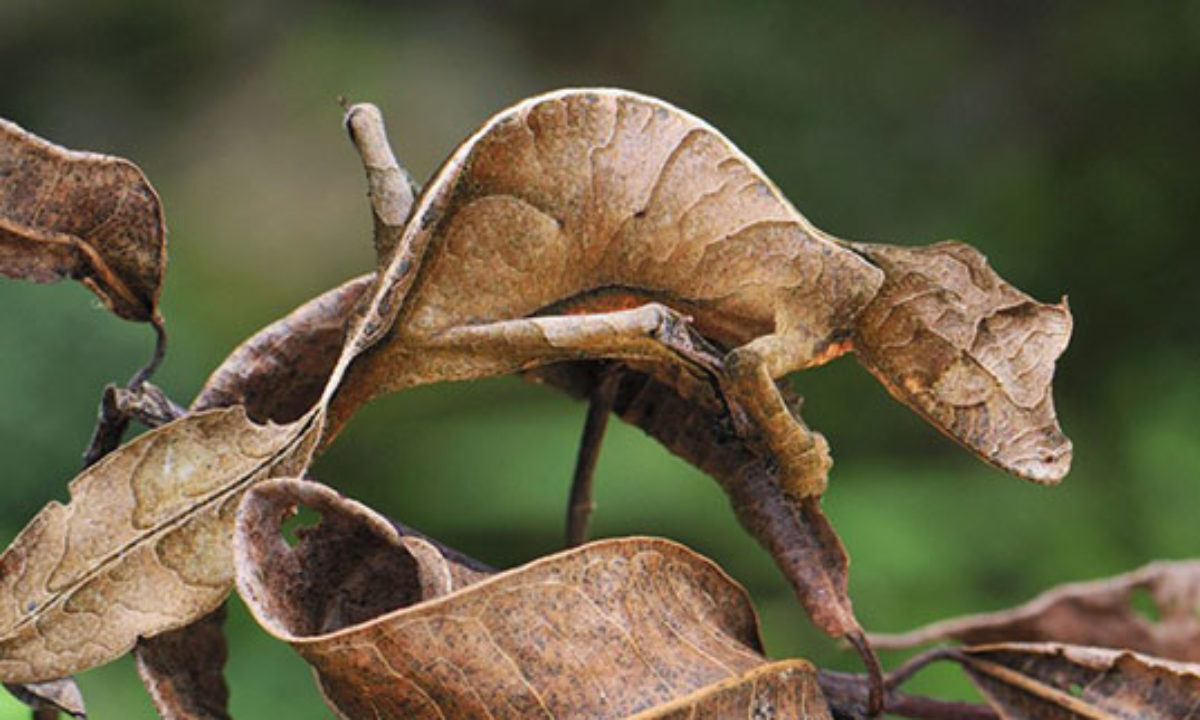
Camouflage is one of nature's most incredible survival tricks. It allows animals to blend into their surroundings, making it tough for predators to spot them. From the arctic fox changing its coat color with the seasons to the octopus altering its skin texture in seconds, camouflage is everywhere. Some animals, like the leaf butterfly, look like dead leaves, while others, like the zebra, use stripes to confuse predators. Even marine creatures like the cuttlefish can change their appearance to match the ocean floor. These adaptations show the amazing ways animals have evolved to stay hidden and survive in their environments.
Key Takeaways:
- Nature is full of amazing camouflage techniques, from animals changing color with the seasons to blending into their surroundings. This helps them stay hidden from predators and sneak up on prey.
- Camouflage isn't just about hiding; it's also a survival strategy and a form of communication. Animals use it to avoid being eaten and to find mates, showing how clever and adaptable nature can be.
Seasonal Camouflage
Some animals adapt their camouflage to the changing seasons, ensuring they remain hidden year-round.
- Arctic Fox: The arctic fox sports a white coat in winter to blend with snow, switching to brown in summer to match tundra vegetation.
- Snowshoe Hare: This hare changes from brown in summer to white in winter, making it hard for predators to spot it against the snow.
Masters of Disguise
Certain creatures have perfected the art of blending into their surroundings, making them nearly invisible.
- Octopus: Octopuses can change their skin color and texture in seconds, mimicking rocks, coral, and even sand.
- Cuttlefish: These marine animals can alter their appearance to match their environment, using chromatophores in their skin.
Background Matching
Many animals use background matching to blend seamlessly with their surroundings.
- Flounder: This fish lies flat on the seafloor, its speckled skin making it nearly indistinguishable from the sand.
- Leaf-Tailed Gecko: With a body that looks like a dead leaf, this gecko is almost impossible to spot in its natural habitat.
Disruptive Coloration
Disruptive coloration breaks up an animal's outline, making it harder to detect.
- Zebra: The black and white stripes of zebras make it difficult for predators to single out one animal in a herd.
- Tiger: Tigers have stripes that help them blend into the tall grasses of their habitat, making them stealthy hunters.
Countershading
Countershading involves having a darker back and a lighter belly, reducing visibility.
- Sharks: Many sharks have a dark top and a light underside, making them harder to see from above and below.
- Deer: The darker back and lighter belly of deer help them blend into the forest floor and sky.
Olfactory Camouflage
Some animals use scent to hide from predators.
- California Ground Squirrel: This squirrel chews rattlesnake skin and applies it to its tail, masking its scent to smell like a rattlesnake.
- Caterpillars: Certain caterpillars emit chemicals that mimic the smell of their host plants, confusing predators.
Creative Camouflage
Animals often use their environment creatively to stay hidden.
- Dresser Crab: This crab attaches pieces of coral and sponge to its body, blending into the seafloor.
- Decorator Crab: Similar to the dresser crab, this crab decorates itself with algae and other materials to avoid detection.
Camouflage in the Military
Humans have also adopted camouflage techniques for various purposes.
- Ghillie Suits: Used by snipers, these suits are covered in foliage to blend into thick vegetation.
- Khaki Uniforms: The British Army introduced khaki uniforms in the 1850s to blend into desert environments.
Animal Color Change
Some animals can change their color for camouflage, communication, or emotional expression.
- Chameleon: Chameleons can change their skin color to blend into their surroundings or signal aggression.
- Cuttlefish: Besides camouflage, cuttlefish change color to communicate with each other.
Camouflage in Predators
Predators often use camouflage to sneak up on their prey.
- Leopard: Leopards have spotted coats that help them blend into sun-dappled areas, making them stealthy hunters.
- Polar Bear: With white fur, polar bears blend into the Arctic ice, making it easier to hunt seals.
Camouflage in Prey
Prey animals use camouflage to avoid predators.
- Turtle: Turtles blend into rocks and logs underwater, making it hard for predators to spot them.
- Arctic Owl: These owls have snow-white feathers that help them blend into the Arctic tundra.
Insect Camouflage
Insects are masters of disguise, often mimicking their surroundings.
- Bark Bug: These bugs look like part of the tree bark, avoiding detection by birds.
- Leaf Butterfly: With wings that resemble dead leaves, these butterflies are nearly invisible when resting.
Marine Camouflage
Marine animals use various techniques to blend into their watery environments.
- Ornate Wobbegong Shark: This shark's body resembles rock and coral, making it hard to spot in shallow waters.
- Prawns: Prawns can change their color to match seaweed and rocks, avoiding predators.
Forest Camouflage
Forest animals use their surroundings to stay hidden.
- Jaguar: Jaguars have coats that blend into the leafy foliage and tree trunks of the forest.
- Ocelot: Similar to jaguars, ocelots have spotted coats that help them blend into their forest habitat.
Desert Camouflage
Desert animals have adapted to blend into their sandy environments.
- Fennec Fox: With a sandy-colored coat, fennec foxes blend into the desert dunes.
- Horned Viper: This snake's scales match the desert sand, making it nearly invisible.
Camouflage in Birds
Birds use camouflage to hunt and avoid predators.
- Pheasant: Pheasants have feathers that blend into the forest floor, making them hard to spot.
- Nightjar: These birds have mottled feathers that resemble the forest floor, providing excellent camouflage.
Camouflage in Mammals
Mammals use various techniques to stay hidden.
- Deer: With coats that match their forest surroundings, deer are hard to spot by predators.
- Rabbit: Rabbits have brown coats that blend into the forest floor, making them less visible.
Camouflage in Amphibians
Amphibians use camouflage to avoid predators.
- Frog: Frogs often have patterns that match their surroundings, such as leaf-like patterns on their skin.
- Toad: Toads have bumpy, earth-toned skin that helps them blend into the forest floor.
Camouflage in Reptiles
Reptiles use various techniques to stay hidden.
- Chameleon: Chameleons can change their skin color to match their surroundings, making them hard to spot.
- Gecko: Geckos have skin patterns that blend into their environment, providing excellent camouflage.
Camouflage in Fish
Fish use camouflage to avoid predators and hunt prey.
- Flounder: This fish lies flat on the seafloor, its speckled skin making it nearly indistinguishable from the sand.
- Anglerfish: With a body that resembles the seafloor, anglerfish are hard to spot by both prey and predators.
Camouflage in Marine Invertebrates
Marine invertebrates use various techniques to stay hidden.
- Cuttlefish: These animals can change their skin color and texture to match their surroundings in seconds.
- Octopus: Octopuses are masters of disguise, mimicking rocks, coral, and even sand.
Camouflage in Desert Invertebrates
Desert invertebrates have adapted to blend into their harsh environments.
- Scorpion: With a body that matches the desert sand, scorpions are nearly invisible.
- Tarantula: These spiders have bodies that blend into the sandy dunes and rocky outcrops.
Camouflage in Forest Invertebrates
Forest invertebrates use their surroundings to stay hidden.
- Spider: Many spiders have bodies that blend into the leafy foliage and tree trunks of the forest.
- Beetle: Beetles often have patterns that match their surroundings, making them hard to spot.
Mechanisms of Camouflage
Camouflage involves various mechanisms to stay hidden.
- Background Matching: Animals blend into their surroundings to avoid detection.
- Disruptive Coloration: Patterns break up an animal's outline, making it harder to spot.
Evolutionary Adaptation of Camouflage
Camouflage has evolved as an adaptive strategy in many species.
- Natural Selection: Camouflage provides a survival advantage by reducing the risk of predation.
- Behavioral Processes: Camouflage plays a crucial role in behaviors like courtship, mate selection, and predator deterrence.
Nature's Masterpieces of Camouflage
Camouflage is a mind-blowing survival strategy in the animal kingdom. From the arctic fox changing its coat with the seasons to the octopus altering its skin texture in seconds, these adaptations are nothing short of amazing. Background matching, disruptive coloration, and countershading are just a few of the clever tactics animals use to stay hidden. Even more fascinating are the flower mantis that mimics blossoms and the leaf butterfly that looks like a dead leaf. These creatures have evolved in incredible ways to blend into their environments, making it tough for predators to spot them. The diversity and creativity in these camouflage techniques highlight the adaptability and resilience of life on Earth. Next time you're out in nature, take a closer look—you might just spot one of these hidden wonders.
Frequently Asked Questions
Was this page helpful?
Our commitment to delivering trustworthy and engaging content is at the heart of what we do. Each fact on our site is contributed by real users like you, bringing a wealth of diverse insights and information. To ensure the highest standards of accuracy and reliability, our dedicated editors meticulously review each submission. This process guarantees that the facts we share are not only fascinating but also credible. Trust in our commitment to quality and authenticity as you explore and learn with us.


